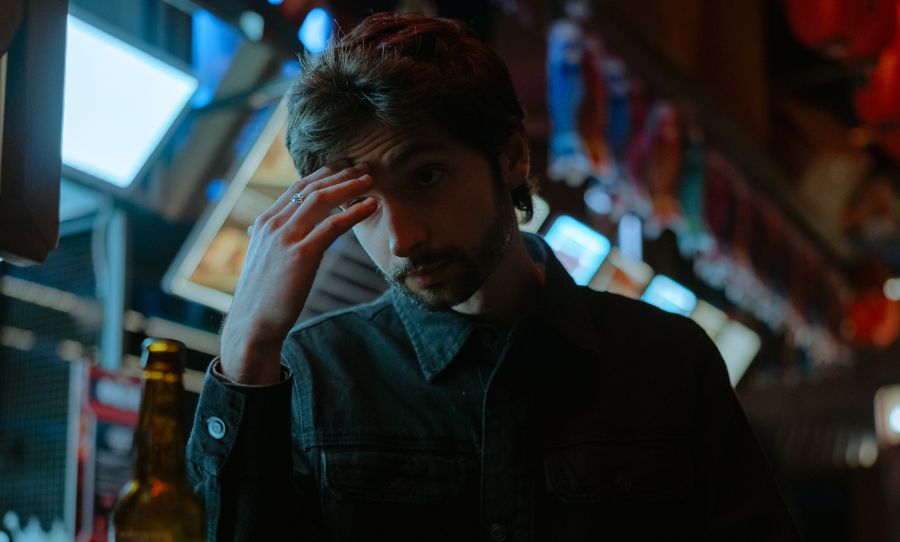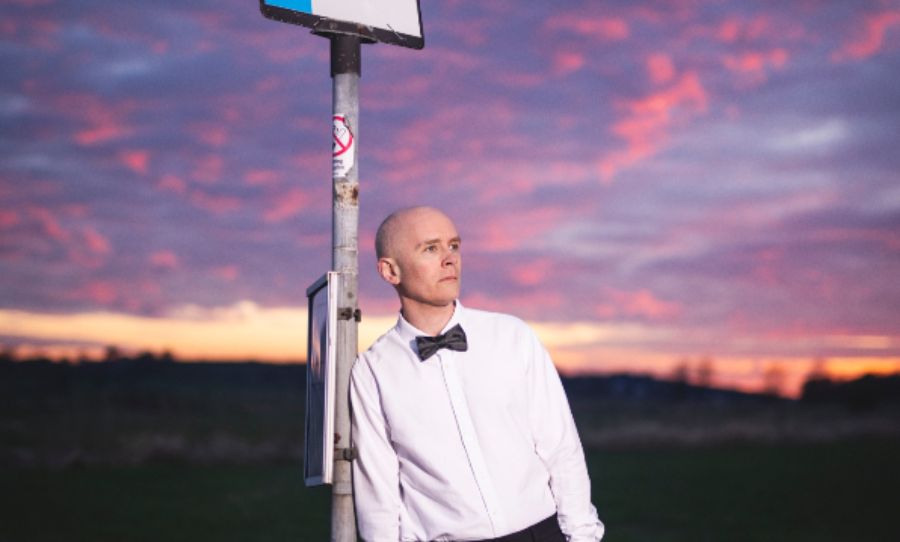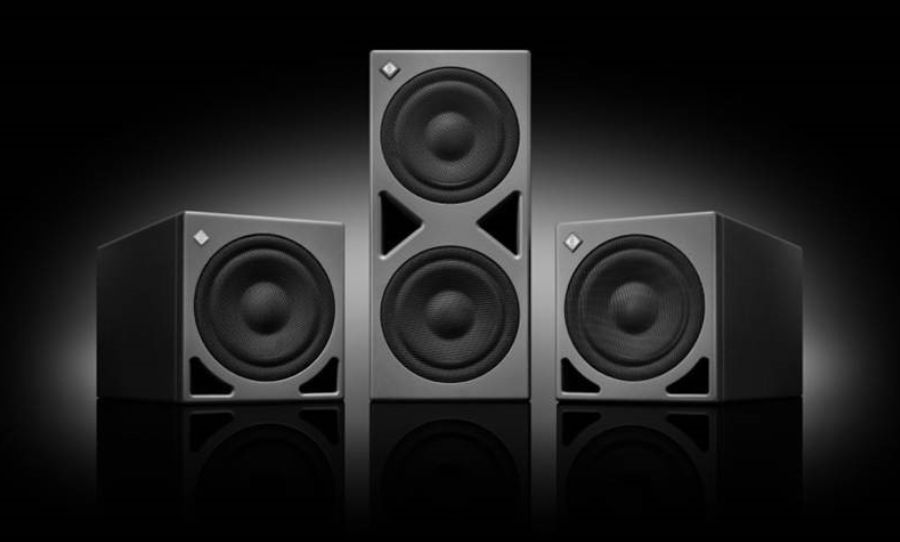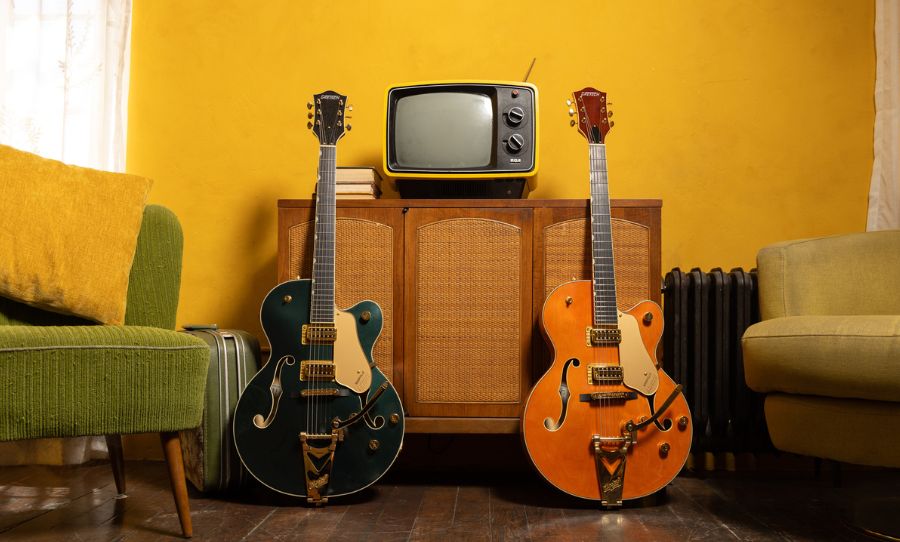Madrid-based producer RUDEROW isn’t here to play by genre rules
Blending darkwave, glitch-pop, and Asian electronica, RUDEROW‘s latest concept album Geishas is a hypnotic sonic odyssey steeped in narrative worldbuilding.
Born in Hong Kong and raised across South Africa, Shanghai, and Spain, the 25-year-old artist draws from a broad cultural palette to craft music that feels cinematic, unpredictable, and deeply personal.
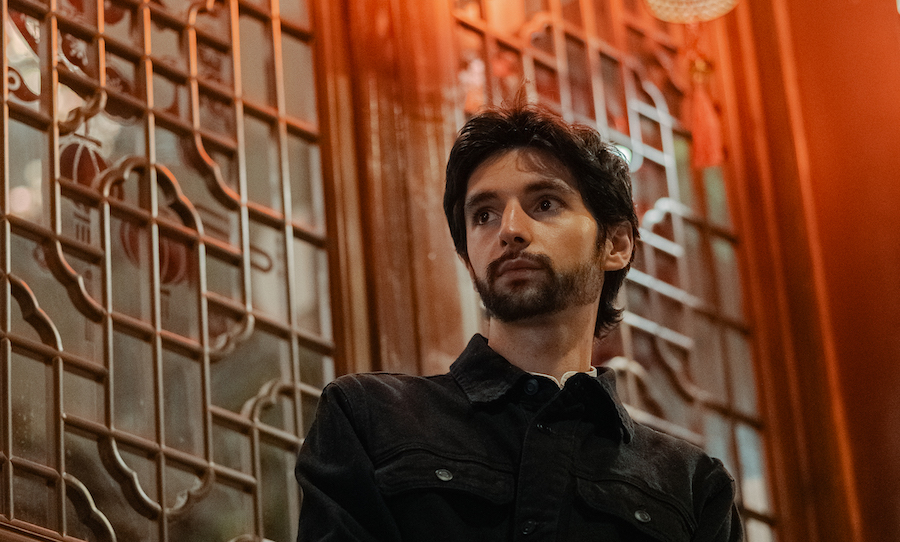
What began as a single beat spiralled into a rich, shape-shifting album that explores identity, rebellion, and self-expression through a surreal tale of a young woman training to become a geisha.
Alongside breakcore percussion and ambient textures, RUDEROW weaves AI-generated dialogue and glitchy vocal samples into his tracks—creating a dreamlike world that echoes Burial and Aphex Twin while sounding entirely his own.
We caught up with RUDEROW to dig into his creative process, the roots of Geishas, and how storytelling and sound design help him turn inner chaos into musical clarity.
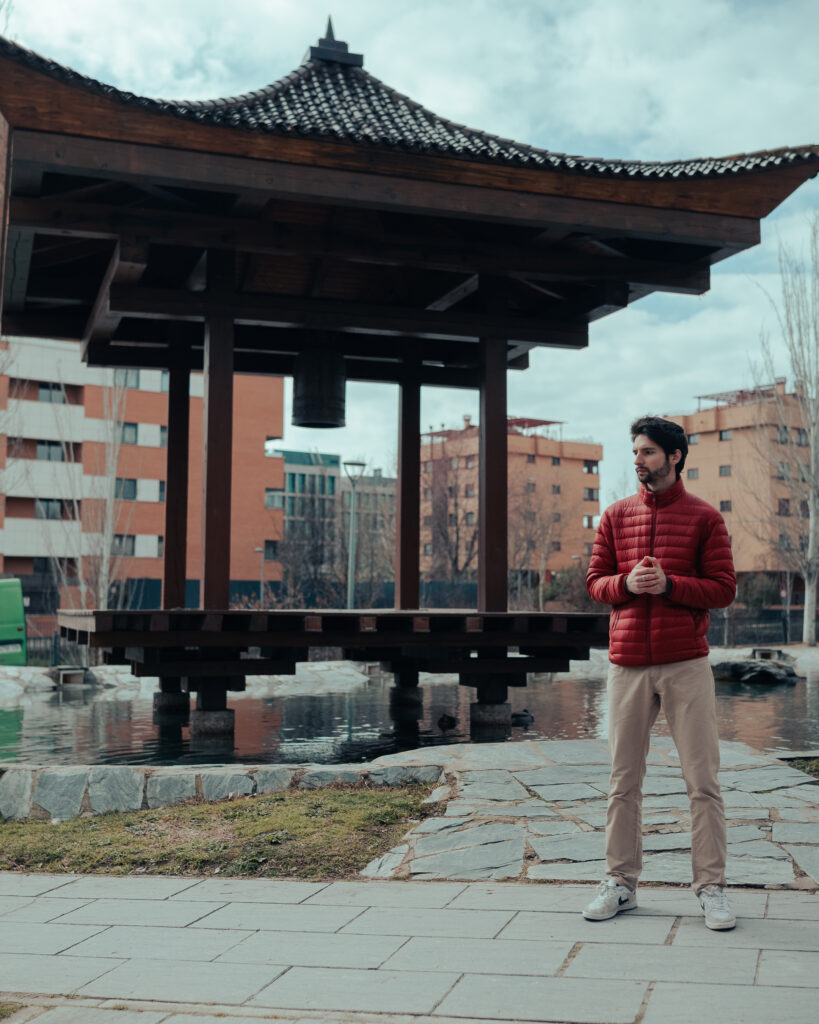
HAPPY: Geishas is such a rich and narrative-driven album. What initially sparked the idea for telling this story through music?
RUDEROW: As a child, I used to write stories and comics about a detective named “Inspector Septo” inspired by inspector Clouseau from the pink panther.
I also wrote versions of stories about Batman, Star Wars, and Pirates of the Caribbean, they were some of my favorite films when I was small.
I also loved watching Teen Titans, Transformers and Marvel, so I was really into superheroes and fantasy.
So I guess that the narrative-driven idea in my work stems from who I was since I was a kid.
I find storytelling quite compelling and I wanted to include it in my music.
Humans love stories, we’ve always been story tellers, so why not mix storytelling with music?
The beauty of fantasy is that there are no rules. You can build anything from the ground up and that mirrors how I feel about music too.
I love a bit of everything: music, art, history, business, nature, sports… I’m inspired by so many different things, and I reflect that in my sound.
I can’t stick to one genre, not because I don’t want to, but because my creativity doesn’t work within limits.
That’s why the concept of worldbuilding in music resonates so deeply with me.
Through sound design and composition, I can craft entire worlds, imaginary places that feel alive.
The spark for Geishas came from a track I made in early 2024 called “Geishas!!!”. It was one of the most fun and addictive beats I’d ever produced.
I knew instantly I wanted to expand that idea. After wrapping up my previous album Jungle Tape, I dove headfirst into this new project.
Track after track started to pour out, I was in a creative flow. Then the story started to take shape.
I began experimenting with interludes, dialogue between characters in Japanese, and ambient textures behind the conversations.
That’s when the world of Geishas really began to unfold.
HAPPY: You’ve lived all over the world—Hong Kong, South Africa, Shanghai, and now Madrid. How do those cultural experiences bleed into Geishas, or your sound more broadly?
RUDEROW: Great question. The influence of Japanese culture has always been present, directly or indirectly throughout my life.
Hong Kong has lots of Japanese influence and I used to have some friends from Japan.
Lots of the Chinese people I knew there also had gone to visit Japan and adopted some habits and customs similar to the Japanese.
Even though I’ve never really watched much anime from Japan, the few that I did watch I did enjoy a lot.
My friends from Hong Kong and Spain consumed lots of anime series and Manga, but I never got used to consuming it as much as they did, although they continuously try to convince me to buy into it haha.
I absolutely love Akira Kurosawa though, especially his film “Dreams” which inspired the dreamy realism of the Geishas narrative.
From South Africa I probably got a very typical african sound, especially the presence of percussion throughout my music, especially in Jungle Tape.
There are lots of tribal beats, drums and rhythms in that project. In fact, much of drum and bass and breakcore comes from Caribbean Rhythms like dub and african-american styles such as funk and jazz.
So in a way, those early influences naturally came full circle in my production.
HAPPY: The album dives deep into themes like identity and rebellion. Were there any personal experiences or emotional states that influenced the story behind the album?
RUDEROW: The main character of the story is a 27-year-old Japanese woman named Tomoka.
She has a background in the arts — she knows how to paint and make music — but finds herself unemployed and unsure of her next steps.
She ends up applying for a job to become a geisha. Eventually, she gets a call from the Okasan (the head of the okiya — the woman who manages the geisha house and is respectfully referred to as the “mother” by the maiko and geiko who live and work there).
When I was making the album, I was also going through a short period of unemployment — about a month — and that personal experience naturally made its way into the narrative.
It also came at a time when I had just finished university, and to be honest, I wasn’t very satisfied with my experience.
I felt like a lot of what I was taught was outdated — with teaching methods that felt disconnected from the reality of the world we live in.
University, in its current form, often prepares you to be a good, obedient employee, working a white-collar job for 40 years and living paycheck to paycheck.
And while that path works for many people, I believe that idea is already becoming obsolete, especially for our generation.
I think education should be about preparing people, not just workers. It should teach you how to solve problems, navigate confrontation, collaborate with others, think critically and creatively — and above all, help you feel like what you’re doing actually has meaning.
Instead, we’re told to write reports, memorize content for exams, and repeat what a teacher said in a seminar.
But life doesn’t work like that. In the real world, you have to find your own answers, experiment, fail, learn, adapt, and keep pushing forward.
So with Geishas, since I’ve always been critical of the traditional education system, I wanted to take something deeply rooted in tradition — geisha culture — and flip it on its head.
I brought in the visual symbolism of tattoos, which are still stigmatized in Japan, to challenge notions of beauty, self-expression, and individuality.
And musically, I used everything I had: samples, MIDI keyboards, AI-generated elements, and Ableton Live, to craft a world through sound.
I was loosely inspired by the soundtrack to Memoirs of a Geisha, but instead of sticking to traditional orchestration, I wanted to break the rules and create a hybrid of genres and moods that could carry the concept.
Tomoka, in many ways, is a reflection of who I hope to become, an indie artist who uses her platform to share something original and build a following.
Her decision to become a geisha is strategic, not just for survival, but as a stepping stone toward becoming a recognized artist in Japan.
That’s the heart of the story: using what you have, even when it doesn’t feel ideal, to pursue something bigger, something uniquely your own.
HAPPY: You blend genres like jungle, glitchcore, ambient, and synthpop so fluidly. How do you decide what musical elements a track needs when you’re worldbuilding?
RUDEROW: It’s mostly intuitive. I make a bunch of beats and start to see which ones speak to the same world or vibe. I’m not thinking, “This next track has to be jungle” , it just flows. I think of pacing and emotional contour more than genre. I don’t like sticking to a single “anchor” in a song. The track builds itself through emotion and experimentation.
HAPPY: Burial and Aphex Twin are big influences for you—how did their approach to “creating realities” shape your process while making Geishas?
RUDEROW: What influences me most about Burial and Aphex Twin is their ability to create space, not just sonically, but emotionally.
Their music feels like it lives in a room of its own: echoing, intimate, almost sacred. I
t’s like stepping into a reverb-soaked cave or a dimly lit chamber where something fragile and mysterious is taking place.
You don’t have to analyze it, it plays in the background, and your mind naturally begins to build worlds around it.
Sometimes the track title nudges you in a certain direction, other times you project your own stories onto it and create something entirely personal.
I remember once reading the comments under one of Aphex Twin’s songs from Selected Ambient Works Volume II and people weren’t just commenting on the music, they were sharing memories.
One man said that when his wife was pregnant, they would place headphones on her belly and play that song for the baby.
Others talked about childhood, grief, or late-night drives through quiet cities. It was like the track had unlocked their pasts.
And that, to me, is magical. If your music can do that, if it can transport people, remind them of who they are, or who they were — then you’ve truly succeeded as an artist.
HAPPY: You mentioned using AI elements in your production. Can you talk about how that plays into your creative workflow?
RUDEROW: The way I use AI might evolve in the future, but for this album specifically, I experimented with it in a few key ways.
I used AI-generated vocals on tracks like Wandering Spirits and Shrine, as well as the melodic line for Tormented Angel and the Japanese dialogues that appear throughout the project.
To isolate and manipulate different elements of sound, I also used a tool called Moises, which lets you split a track into separate stems: drums, vocals, bass, etc.
It’s super useful for digging into the details of a song or sampling individual parts.
For Shrine and Wandering Spirits, I started by producing the beats, but I felt they were missing something — a human (or almost-human) voice.
So I turned to SUNO, an AI song generator. I fed in the lyrics I had in mind and matched the output to the key of each track.
Then I brought those songs into Moises, extracted just the vocals, and layered them into my own tracks.
And just like that, two timeless collaborations between me and the machine.
For the interludes and dialogues, I used Narakeet, a text-to-speech platform with a wide range of AI voices in multiple languages.
I wrote the script in English, selected Japanese speakers, translated the lines, and generated the voiceovers.
Ironically, I think Narakeet is actually designed for language learners and listening exercises, which makes its new role in my concept album even more amusing.
HAPPY: What was the weirdest or most unexpected sound you sampled or created for this album?
RUDEROW: Definitely the chopped vocals on “Imma Jodai” and “Geishas!!!”.
Playing with pitch, slicing the vocals, rearranging them, it was chaos in the best way.
The violins at the start of “Imma Jodai” are quirky and off-kilter, which I love.
It’s wild, loud, and catchy. Honestly, it’s some of the most fun I’ve had making music.
HAPPY: Geishas started as an EP but grew into a full-length album. What was it about this project that pulled you in deeper creatively and made it impossible to stop at just a few tracks?
RUDEROW: I just couldn’t stop. I was having so much fun building the world, creating the characters, experimenting with the sounds, it became something bigger than I’d planned.
And once I got going, I didn’t want to leave anything out. Every track felt essential.
HAPPY: You only started producing seriously at 23, which is pretty recent. What’s surprised you most about diving into music full-on?
RUDEROW: That I don’t have to “know what I’m doing” to make something powerful. Music has no rules.
It gave me total creative freedom — the chance to invent something new every time I sit down to make a beat. That freedom is addictive.
HAPPY: What’s next for RUDEROW? Are you exploring any new themes, collabs, or directions after Geishas?
RUDEROW: There will be a deluxe for Geishas, and afterwards we’ll see. I’m exploring and creating new songs.
I have ideas for what’s coming next. Will be open for collabs and live sets in the coming months.
Highly recommend following me on insta and tiktok, things are going to get interesting.
HAPPY: Lastly, what makes you happy?
RUDEROW: Making music and being myself. S
omething I thought was impossible has actually now turned into a reality.
My music comes from an honest, natural place and I think that’s what makes it stand out.
